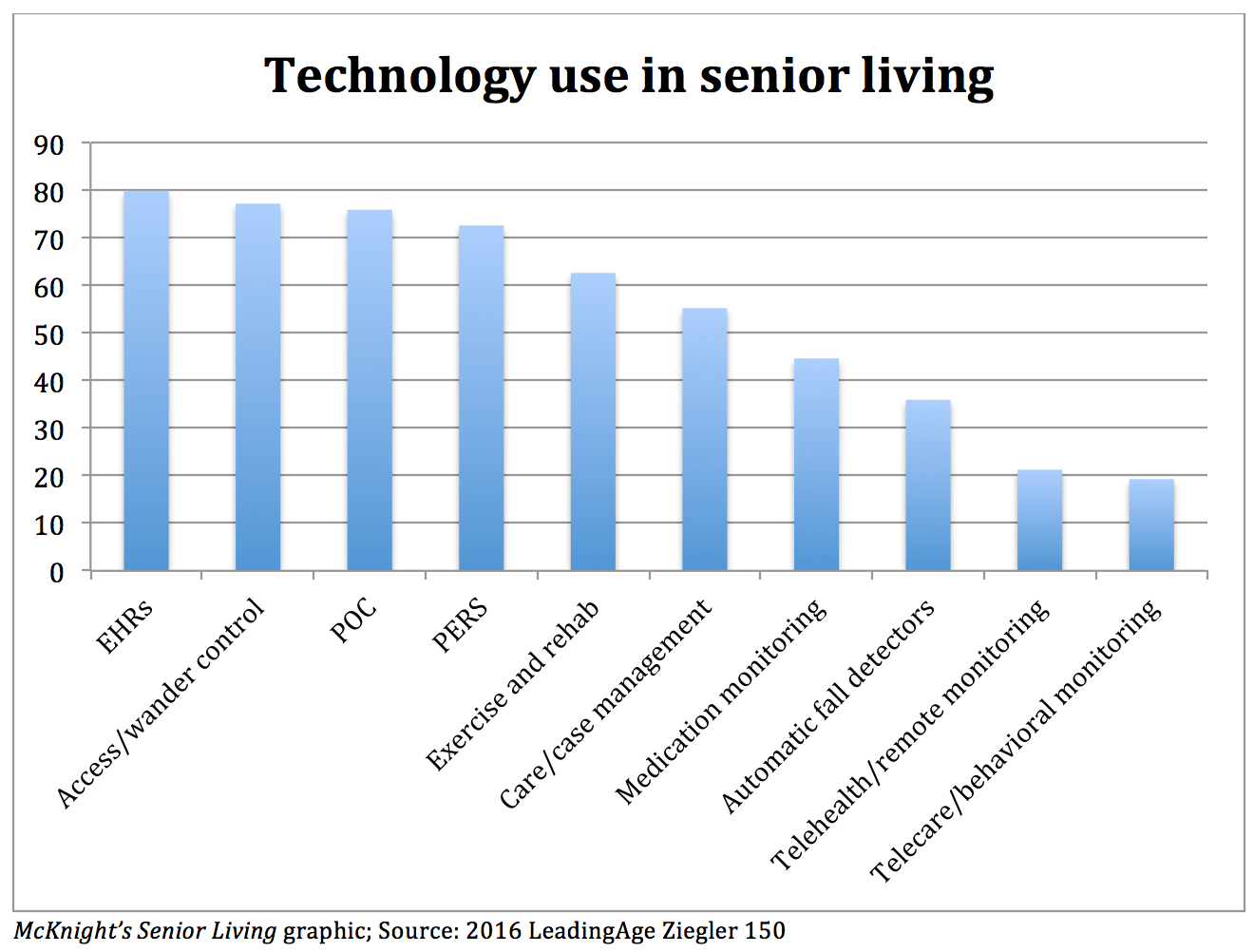
Electronic health records systems are the most common type of technology used by the not-for-profit senior living communities included in the 2016 LeadingAge Ziegler 150 report.
Overall, the technology has been adopted at 80% of operators, an increase of 5% over the past 2 years.
Use of telehealth/remote monitoring technology saw the highest increase among senior living operators since the last report, increasing almost 15% in 2015 to make the adoption rate slightly more than 21%.
Other highlights from the LZ 150:
- Use of access control/wander management systems has increased almost 7% to slightly more than 77%.
- Use of point of care (POC) documentation technology remained around 76%.
- Use of automatic fall detectors was up almost 12%, to an adoption rate of 36%, whereas use of traditional personal emergency response systems (PERS) dropped slightly more than 5% to almost 73%.
- Use of physical exercise and rehabilitation technologies increased approximately 3% to an adoption rate of almost 63%.
- Care/case management and coordination technology, a new category in the report this year, has been adopted by more than 55% of the larger providers on the list.
- Medication monitoring technology increased 5% to almost 45%.
- Telecare/telemonitoring/behavioral monitoring technology use increased 12% to slightly more than 19%.
Single-site providers tended to adopt EHRs, medication monitoring and POC and PERS technology at a slightly higher rate than their multisite counterparts. Automatic fall detectors were adopted at a slightly lower rate at single-site providers than at larger LZ 150 providers, however.
The position of chief information/technology officer was the second most common corporate position created at large providers in 2015, behind chief clinical or health officer, according to the report. Eight organizations on the list hired a CIO/CTO in 2015 (compared with 10 for the medical position); 33% of the LZ 150 providers now have a CIO/CTO.

From the February 01, 2017 Issue of McKnight's Senior Living



